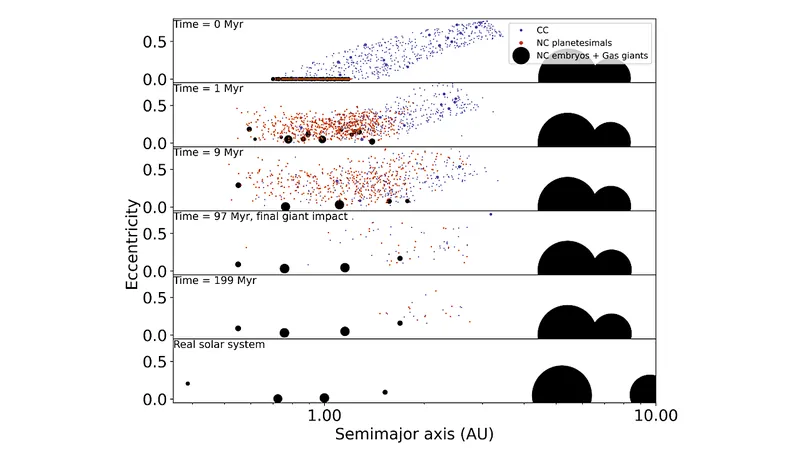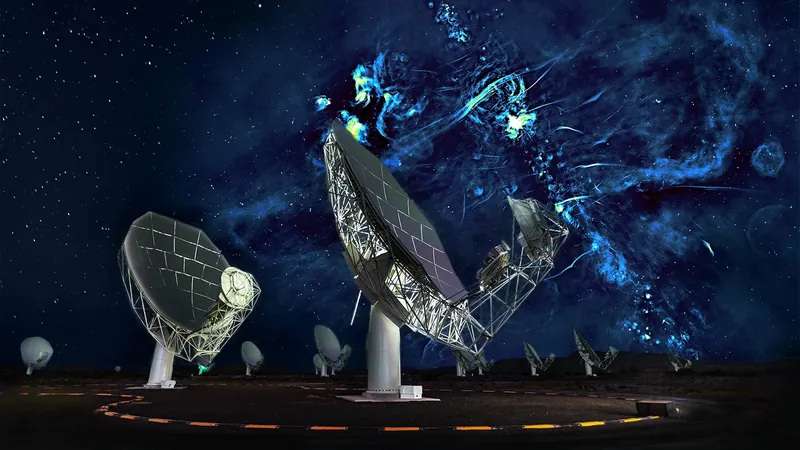
Unveiling the Cosmic Dance: How Tidal Interactions Shape the Universe
2025-05-24
Author: Mei
The Hidden Forces of Tidal Interactions
Gravitational tidal interactions are the unsung heroes behind the dynamic changes in rotational and orbital patterns within planetary and stellar systems. These interactions are particularly prominent in tightly-knit binary star systems and the moons orbiting planets.
The Moon’s Slow Exodus from Earth
One fascinating example is the Earth-Moon relationship, where the dissipation of tidal flows in our oceans gradually nudges the Moon away at a rate of a few centimeters each year. Meanwhile, Earth's day lengthens ever so slightly—by mere milliseconds per century—as a result.
A Global Phenomenon of Tidal Dissipation
These tidal dynamics aren't exclusive to Earth. In fact, they play a crucial role in many astrophysical systems. Take stars with close-in exoplanets, for instance. The tidal dissipation in these slowly rotating stars can lead to the decay of approaching planetary orbits, sometimes culminating in their ultimate destruction. In multi-star systems and close-in gas giants—like the infamous hot Jupiters—initially eccentric orbits are often smoothed out into more circular paths due to these powerful gravitational forces.
The Quest for Understanding Tidal Mechanics
To thoroughly comprehend these celestial processes, researchers are on a quest for a deeper theoretical understanding of how tidal flows behave, as well as how effectively they are dissipated within stars and planets. This insightful journey is crucial not only for explaining current observational data but also for anticipating future cosmic discoveries.
Shining a Light on Unsolved Mysteries
This exploration into the complex interplay of tidal forces and their effects on stellar and planetary systems promises to unveil many unsolved puzzles within the universe. As we delve into the mechanics of tidal dissipation in stars and giant planets, the mysteries of our cosmos only deepen, making this an exciting area for ongoing research.
Looking Ahead in Astrophysics
As this field of study continues to evolve, scientists are eager to apply these insights to future astronomical observations, further enhancing our understanding of the universe’s vast, interconnected dance.






 Brasil (PT)
Brasil (PT)
 Canada (EN)
Canada (EN)
 Chile (ES)
Chile (ES)
 Česko (CS)
Česko (CS)
 대한민국 (KO)
대한민국 (KO)
 España (ES)
España (ES)
 France (FR)
France (FR)
 Hong Kong (EN)
Hong Kong (EN)
 Italia (IT)
Italia (IT)
 日本 (JA)
日本 (JA)
 Magyarország (HU)
Magyarország (HU)
 Norge (NO)
Norge (NO)
 Polska (PL)
Polska (PL)
 Schweiz (DE)
Schweiz (DE)
 Singapore (EN)
Singapore (EN)
 Sverige (SV)
Sverige (SV)
 Suomi (FI)
Suomi (FI)
 Türkiye (TR)
Türkiye (TR)
 الإمارات العربية المتحدة (AR)
الإمارات العربية المتحدة (AR)